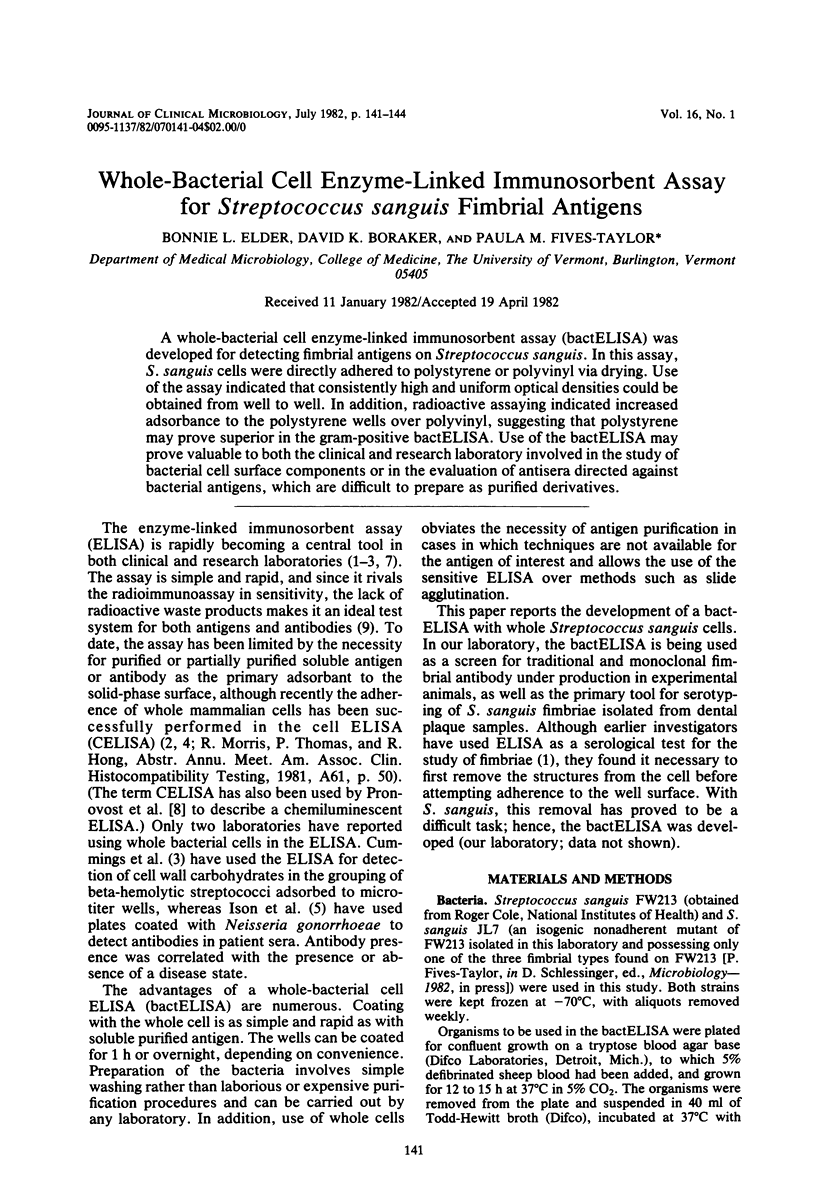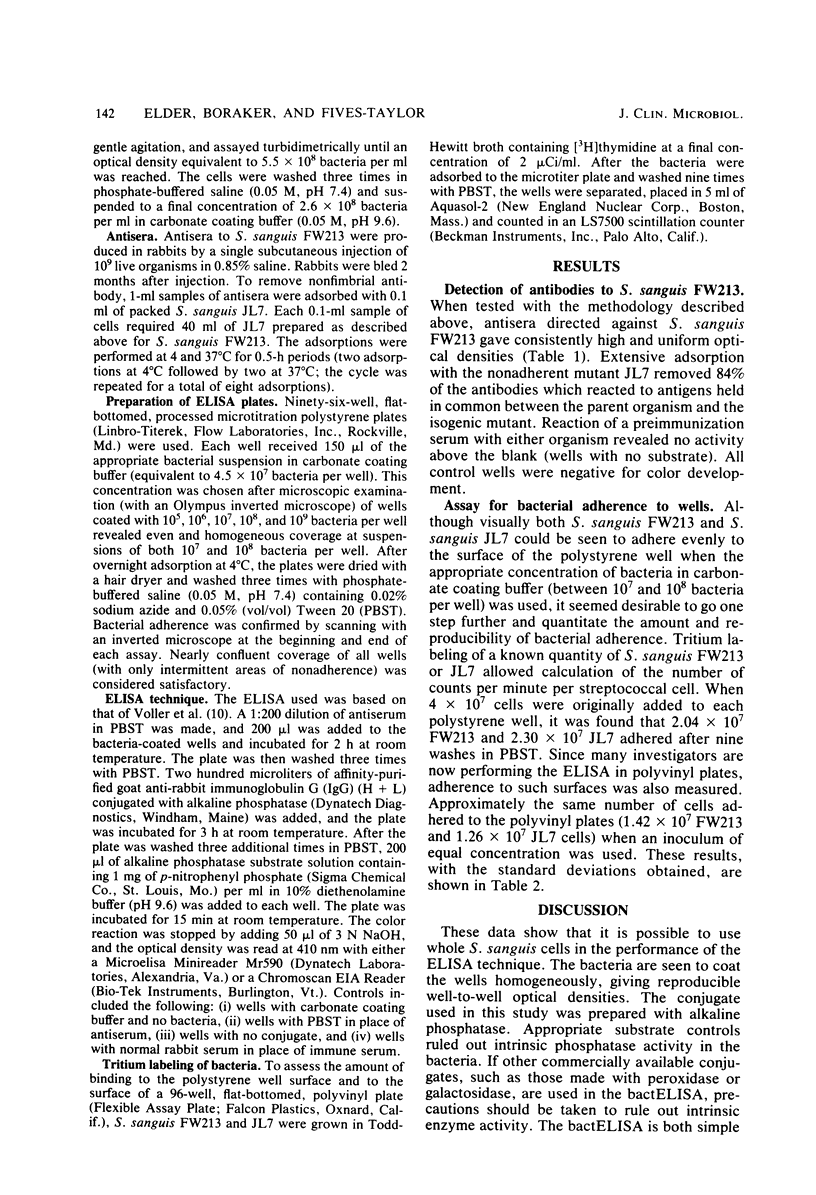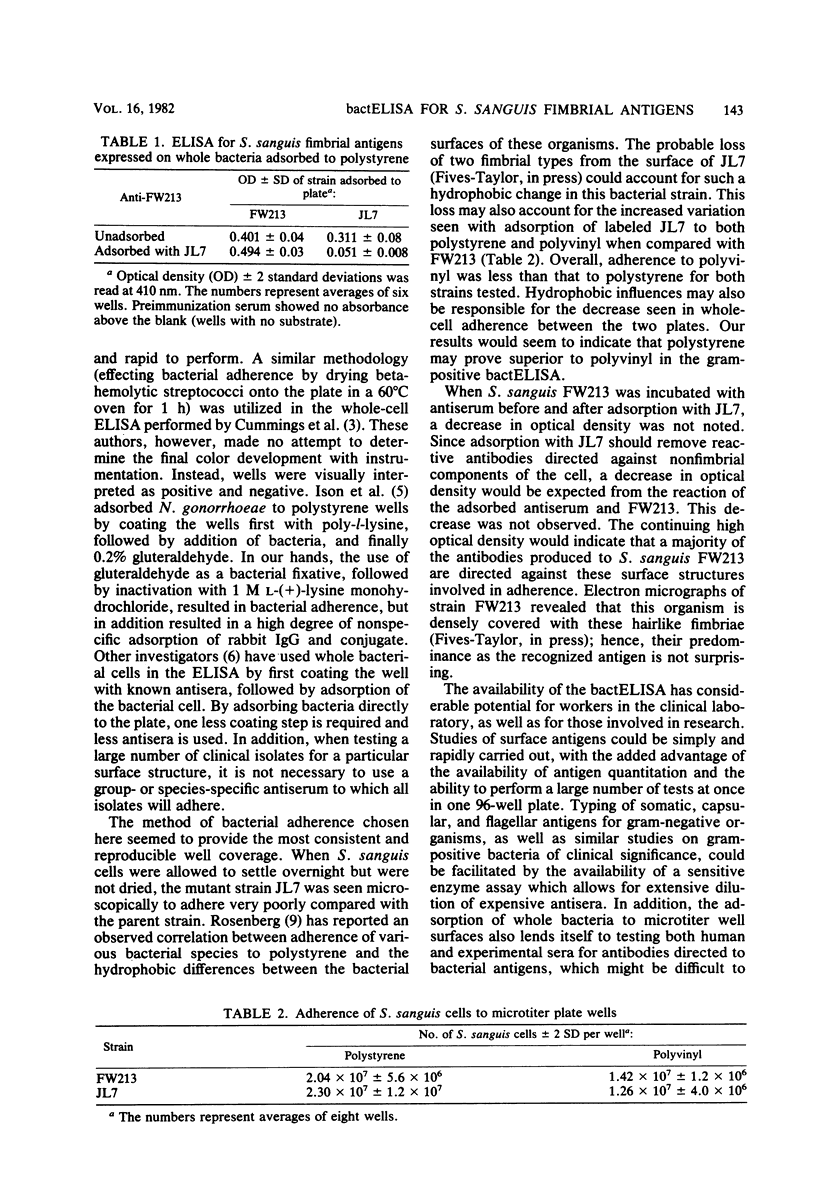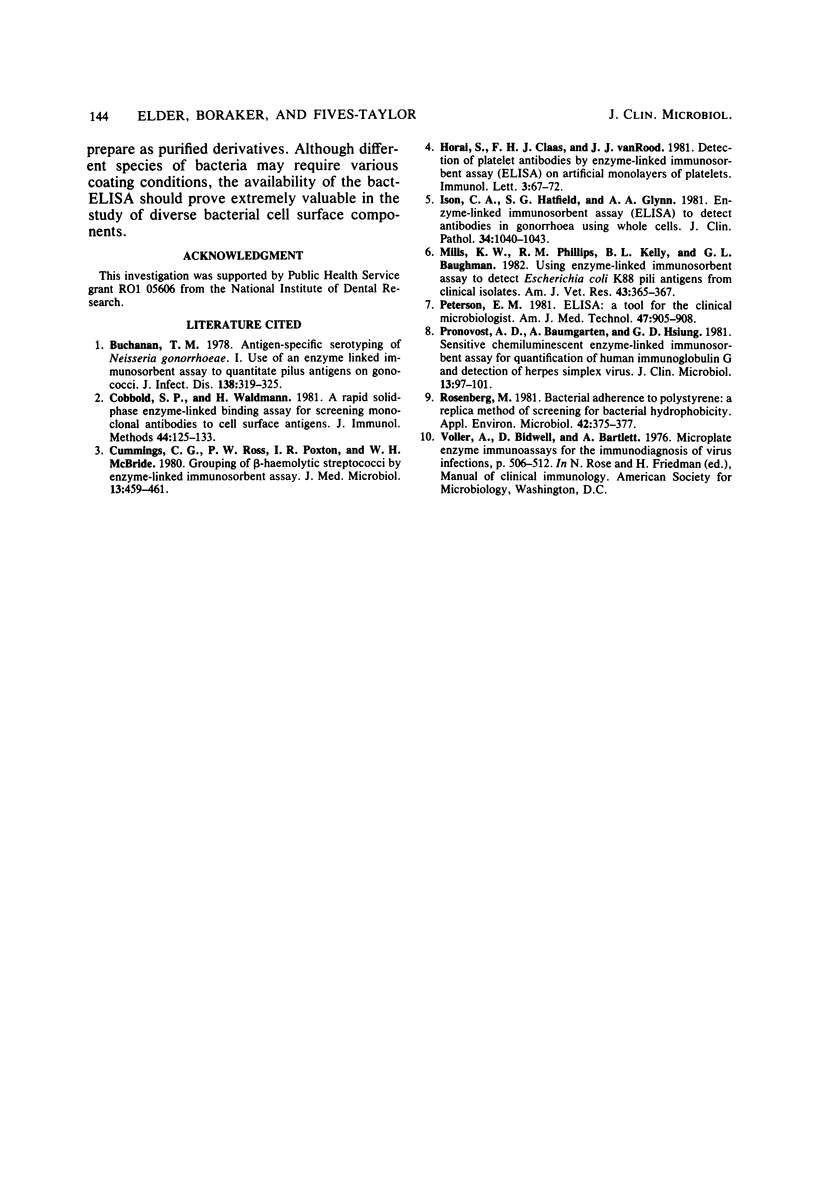Abstract
A whole-bacterial cell enzyme-linked immunosorbent assay (bactELISA) was developed for detecting fimbrial antigens on Streptococcus sanguis. In this assay, S. sanguis cells were directly adhered to polystyrene or polyvinyl via drying. Use of the assay indicated that consistently high and uniform optical densities could be obtained from well to well. In addition, radioactive assaying indicated increased adsorption to the polystyrene wells over polyvinyl, suggesting that polystyrene may prove superior in the gram-positive bactELISA. Use of the bactELISA may prove valuable to both the clinical and research laboratory involved in the study of bacterial cell surface components or in the evaluation of antisera directed against bacterial antigens, which are difficult to prepare as purified derivatives.
Full text
PDF



Selected References
These references are in PubMed. This may not be the complete list of references from this article.
- Buchanan T. M. Antigen-specific serotyping of Neisseria gonorrhoeae. I. Use of an enzyme-linked immunosorbent assay to quantitate pilus antigens on gonococci. J Infect Dis. 1978 Sep;138(3):319–315. doi: 10.1093/infdis/138.3.319. [DOI] [PubMed] [Google Scholar]
- Cobbold S. P., Waldmann H. A rapid solid-phase enzyme-linked binding assay for screening monoclonal antibodies to cell surface antigens. J Immunol Methods. 1981;44(2):125–133. doi: 10.1016/0022-1759(81)90340-9. [DOI] [PubMed] [Google Scholar]
- Cumming C. G., Ross P. W., Poxton I. R., McBride W. H. Grouping of beta-haemolytic streptococci by enzyme-linked immunosorbent assay. J Med Microbiol. 1980 Aug;13(3):459–461. doi: 10.1099/00222615-13-3-459. [DOI] [PubMed] [Google Scholar]
- Horai S., Claas F. H., van Rood J. J. Detection of platelet antibodies by enzyme-linked immunosorbent assay (ELISA) on artificial monolayers of platelets. Immunol Lett. 1981 Jun;3(2):67–72. doi: 10.1016/0165-2478(81)90052-3. [DOI] [PubMed] [Google Scholar]
- Ison C. A., Hadfield S. G., Glynn A. A. Enzyme-linked immunosorbent assay (ELISA) to detect antibodies in gonorrhea using whole cells. J Clin Pathol. 1981 Sep;34(9):1040–1043. doi: 10.1136/jcp.34.9.1040. [DOI] [PMC free article] [PubMed] [Google Scholar]
- Mills K. W., Phillips R. M., Kelly B. L., Baughman G. L. Using enzyme-linked immunosorbent assay to detect Escherichia coli K88 pili antigens from clinical isolates. Am J Vet Res. 1982 Feb;43(2):365–367. [PubMed] [Google Scholar]
- Peterson E. M. ELISA: a tool for the clinical microbiologist. Am J Med Technol. 1981 Nov;47(11):905–908. [PubMed] [Google Scholar]
- Pronovost A. D., Baumgarten A., Hsiung G. D. Sensitive chemiluminescent enzyme-linked immunosorbent assay for quantification of human immunoglobulin G and detection of herpes simplex virus. J Clin Microbiol. 1981 Jan;13(1):97–101. doi: 10.1128/jcm.13.1.97-101.1981. [DOI] [PMC free article] [PubMed] [Google Scholar]
- Rosenberg M. Bacterial adherence to polystyrene: a replica method of screening for bacterial hydrophobicity. Appl Environ Microbiol. 1981 Aug;42(2):375–377. doi: 10.1128/aem.42.2.375-377.1981. [DOI] [PMC free article] [PubMed] [Google Scholar]


